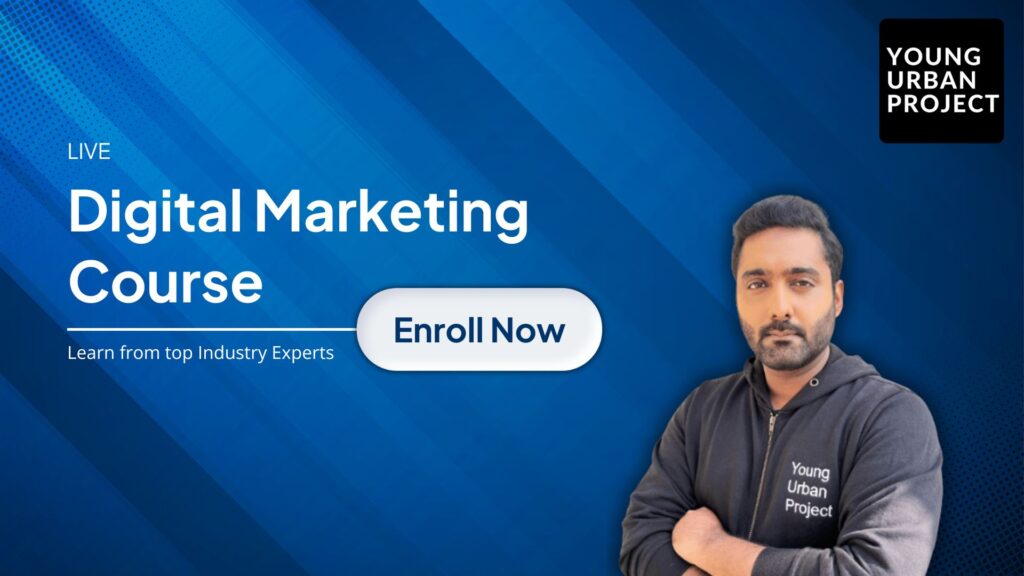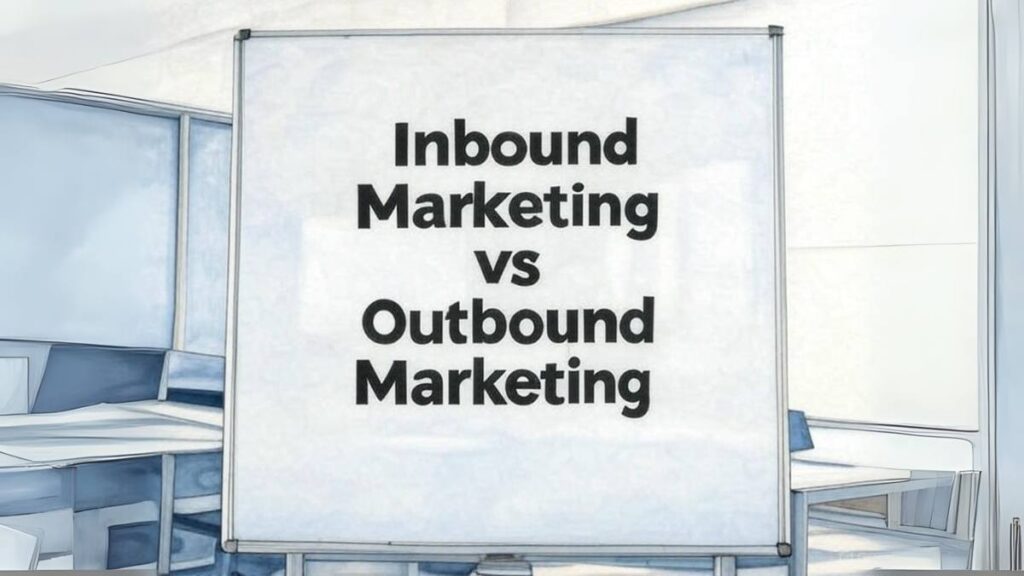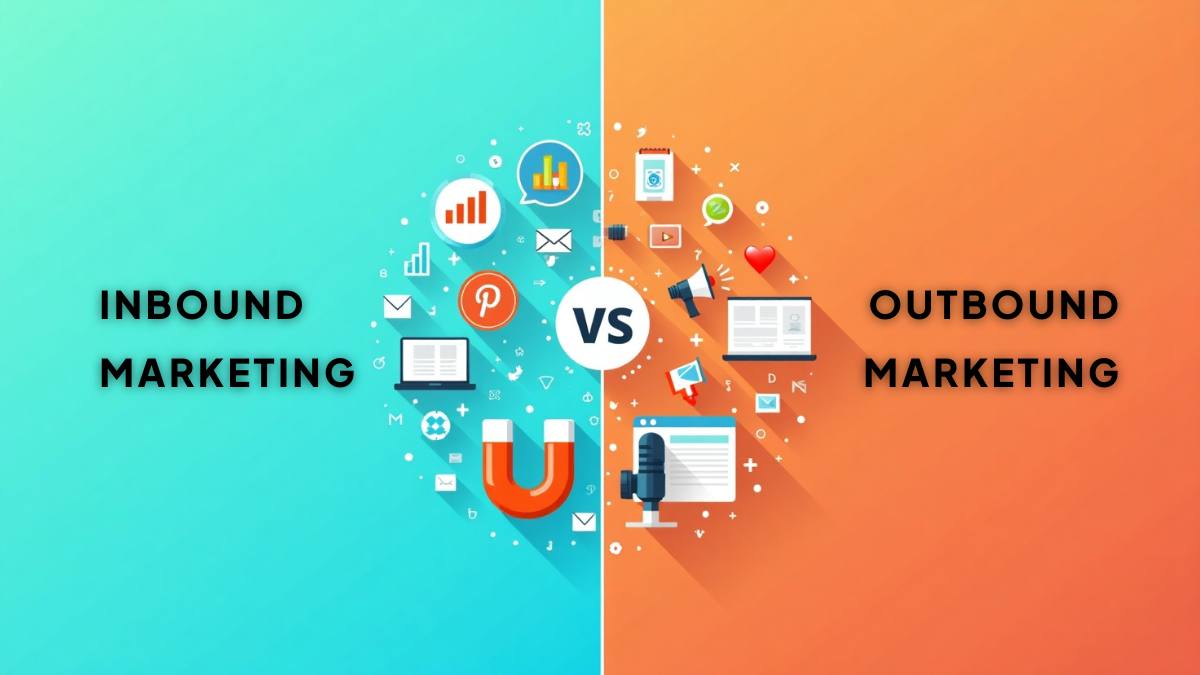Marketing these days can feel like a giant puzzle, right? There are so many ways to reach people, and the choices can get overwhelming. But at the heart of it all, there are two main approaches you’ve probably heard of: inbound and outbound marketing.
Table of Contents
To put it simply, one is about pulling people in, and the other is about pushing your message out. Both have their place. Both can work. But they’re pretty different in how they do the job.
And here’s the thing: knowing the difference between them can make a huge difference in how you spend your time and money on marketing. A lot of brands mess up because they lean too hard into one or the other without really thinking it through.
So, let’s break down what each one is all about and how you can actually use them in a way that makes sense for your business.
What is Outbound Marketing?
Alright, let’s start with outbound marketing. This is the type of marketing that’s been around forever. Think old-school ads on TV, cold calls, flyers… that kind of stuff. Even though things have gone digital now, the basic idea hasn’t changed much.
In simple words, outbound marketing is when you make the first move. You put your message in front of people, whether they asked for it or not.
You know those ads you see when you’re watching YouTube or scrolling Instagram? That’s outbound. A billboard on the side of the road? Outbound. That sales email you didn’t ask for? Yep, also outbound.
What Makes Outbound… Outbound?
Here are the key things that define it:
- It interrupts. You’re doing your thing, watching a video, reading an article, and boom, there’s an ad. Outbound kind of barges in without an invite.
- It’s proactive. The business is making the first move. They’re not waiting for you to search for them, they’re out there hunting for your attention.
- Examples (both old and new):
- TV/radio ads
- Magazine and newspaper ads
- Cold calls & cold emails
- Google Display ads
- Facebook & Instagram ads
- Direct mail
- TV/radio ads
Basically, outbound is about reaching out to as many people as you can and hoping to catch the attention of the right ones.
Benefits of Outbound Marketing
Now, some people love to hate on outbound marketing. They’ll say it’s outdated or annoying. But honestly? It still has some big advantages, especially when used the right way.
1. Fast Reach & Big Exposure
If you want to get your name out fast, outbound is your friend. Let’s say you’re launching a new product and want everyone to know about it, ads (whether online or offline) can put you in front of thousands or even millions of people really quickly.
It’s kind of like turning on a giant spotlight. Sure, not everyone will care, but you’ll get noticed. And even if people don’t click or buy right away, they’ve seen your brand. That counts for something (building awareness).
2. Quick Lead Generation
If you need leads now, like, yesterday, outbound can help. Running a Facebook ad or sending out a cold email campaign can bring in leads faster than waiting around for someone to find your blog post.
Of course, you’ve gotta make sure your targeting is on point. Otherwise, you’re just shouting into the void.
3. Works Well With Inbound
This is something a lot of people forget: outbound and inbound don’t have to be enemies. In fact, they work really well together.
Example: You run a LinkedIn ad (outbound) that promotes your free webinar. People sign up, and now you’ve got them in your email funnel (inbound). Boom, you’ve just combined both strategies like a pro.
Downsides of Outbound Marketing
Alright, let’s keep it real, outbound has its downsides too. It’s not all sunshine and rainbows.
1. It Can Be Expensive
Ads cost money. A lot of it sometimes. Whether it’s a Facebook campaign or a TV spot, you’re paying for that space, and it can add up fast. Plus, because you’re often reaching people who aren’t actively looking for you, the cost per lead can be kinda high.
2. People Get Tired of Ads
We’re all kinda numb to ads now, aren’t we? We scroll past them, skip them, block them… It’s called ad fatigue, and it’s real. The more ads people see, the less they care. Sometimes, outbound just doesn’t hit the way it used to because of this.
3. Trust Issues
Let’s be honest, when a random ad pops up, how much do you trust it? Probably not much. Outbound marketing doesn’t always build a deep connection with people because it feels… well, kinda pushy.
4. Harder to Get Good Feedback
With outbound, especially traditional stuff like TV or print, it’s harder to track what’s working. Digital ads give you more data, but even then, you don’t always get the full picture of what people think or feel. That makes it tricky to fine-tune your approach.
What is Inbound Marketing?
Now let’s talk about inbound marketing, which is basically outbound’s chill cousin.
Instead of chasing after people, inbound marketing focuses on creating valuable content that draws them in naturally. You’re not forcing your message on anyone—instead, you’re offering something useful and letting your audience find you when they’re ready. Working with the best SEO outsourcing company can help ensure that the content you create is optimized to attract the right visitors at the right time.
Here’s the simplest way to put it: inbound marketing is about helping people first, selling to them later.
So, when someone searches Google for “how to get more customers” and finds your blog post? That’s inbound. When someone downloads your free guide or signs up for your newsletter? Also inbound.
Examples of Inbound Marketing
- Content marketing: Blog posts, videos, podcasts, infographics, you name it.
- SEO: Making sure your website and content show up in search results.
- Email marketing: Building a list and sending helpful content.
- Webinars & free resources: Things that teach or help your audience.
Inbound is all about giving people a reason to want to connect with you.
Benefits of Inbound Marketing
So why do marketers rave about inbound? Here’s why.
1. High-Intent Traffic & Better-Quality Leads
People find businesses when actively searching for solutions. These visitors already want what’s offered. Someone searching “best email software” is more likely to buy than someone who just sees a random ad. This brings ready-to-buy customers.
2. Cost-Effective in the Long Run:
Content created once continues working for years. A helpful blog post from 2020 can still bring customers today. While creating quality content takes time, it keeps working without ongoing payment. This reduces the cost per customer over time.
3. Builds Trust & Authority Over Time
Regular helpful content shows expertise. Customers trust businesses that provide value before asking for money. When someone reads useful articles for months, they see the company as an expert. This trust makes sales easier later.
4. Educational & Insight-Driven Approach
Inbound helps customers solve problems through knowledge. Good content answers questions and teaches useful skills. When a business shares knowledge freely, customers learn while forming positive connections. This builds relationships beyond transactions.
5. Guides Prospects Through the Funnel Naturally
Content meets different customer needs at each stage. Beginners find basic guides. Experienced prospects find detailed comparisons. Advanced users find expert tips. This natural progression helps move customers from awareness to purchase without pushing.

Enroll Now: Live Advanced Digital Marketing Course
Downsides of Inbound Marketing
Like anything, inbound isn’t perfect.
1. It Takes Time & Consistency
Inbound is a long game. You won’t see results overnight. It takes time to build up your content, grow your traffic, and earn trust.
2. Can Be Resource-Heavy
Creating good content isn’t easy. It takes time, effort, and sometimes money (if you’re hiring writers, designers, etc.). It’s definitely not “set it and forget it.”
3. You Need a Solid Digital Setup
Your website needs to be fast, mobile-friendly, and SEO-optimized. If your site is clunky or hard to navigate, your inbound efforts won’t get far.
Inbound vs Outbound Marketing: Core Differences

Alright, now that we’ve looked at inbound and outbound on their own, let’s stack them side by side to really see how they compare. This should give you a clearer idea of which one might fit your needs better, or how they can work together.
| Aspect | Inbound Marketing | Outbound Marketing |
| Cost | Lower over time (content keeps working) | Can be expensive, especially ads |
| Speed | Slow to start, builds up gradually | Fast reach and quick results |
| Scalability | Scales well once content is built | Scales with budget (more $$ = more reach) |
| Targeting Precision | High (SEO, personalized content) | Varies (digital ads are targeted, traditional less so) |
| Trust Factor | Builds trust and authority over time | Can feel pushy or less trusted |
| Longevity | Long-lasting impact | Short-term, ends when the campaign stops |
Best Use Cases for Each
Outbound is great for:
- Product launches where you want to make a splash fast
- Promoting time-sensitive offers or events
- Reaching new markets quickly
Inbound is great for:
- Building long-term brand authority
- Educating your audience about your product or industry
- Attracting organic, high-intent leads over time
An Example of Blending Both
Let’s say you run an online fitness coaching business. You write blog posts (inbound) about nutrition tips and workout routines that rank well on Google. But to boost sign-ups faster, you also run Instagram ads (outbound) promoting a free challenge or eBook. The ads bring in new people, and your blog and email funnel keep them engaged over the long term. That’s a perfect mix of both approaches working hand in hand.
How to Choose the Right Approach for Your Business
So, how do you actually decide which path to focus on? Here are a few things to think about:
- Your goals. Need quick wins? Outbound might be better. Building for the long haul? Go inbound.
- Your budget. If you’ve got a good chunk of cash to spend and need fast exposure, outbound can deliver. If your budget’s tight, inbound might be smarter in the long run.
- Your audience. Where do they hang out? Are they actively searching for what you offer (good for inbound), or do you need to put your brand in front of them (better for outbound)?
- Your sales cycle. Long, complex sales cycles often benefit more from inbound because it nurtures trust over time.
In reality, though, most businesses benefit from doing a bit of both. You don’t have to choose one and ignore the other.
Bonus Section: Inbound + Outbound Marketing Integration Ideas
Let’s talk about how you can blend these two in a way that makes sense and gets results.
Example 1: Ads + Content Offers
Run paid ads (outbound) that promote your best-performing blog post or a free downloadable guide (inbound). The ads bring in fresh eyes, and the content keeps them hooked.
Example 2: Retargeting
Use outbound retargeting ads to bring back visitors who landed on your site through inbound. Maybe they read your blog but didn’t sign up for your newsletter, you can remind them with an ad later.
Example 3: Webinars
You create a valuable webinar (inbound) and promote it with email and social ads (outbound). After the webinar, you nurture attendees through email sequences.
Messaging Tip:
The key to making inbound and outbound work together is to keep your messaging consistent. Whether someone finds you through a blog post or a paid ad, your tone, style, and value proposition should feel the same. It keeps your brand experience smooth.
The Evolving Role of Outbound & Inbound in 2025 and Beyond
Marketing is changing fast, and both inbound and outbound are evolving to keep up.
- Privacy-first marketing: With all the new privacy laws and tracking changes (like those iOS updates), outbound is shifting. Brands are focusing more on building first-party data, basically, collecting data directly from their audience, which fits naturally with inbound.
- AI & automation: Both inbound and outbound are getting smarter thanks to AI. For example, AI tools now help with writing blog posts, personalizing emails, and even automating ad campaigns.
- Customer behavior: People are more in control now. They want value upfront before they trust a brand, which makes inbound even more important. At the same time, outbound is becoming more precise and less spammy, thanks to better targeting.
- Conversational marketing: Chatbots and live chat are blurring the lines between inbound and outbound. Whether someone finds you through an ad or a blog, they expect fast, personal responses.
- Retargeting shifts: As cookies fade out, brands are finding new ways to retarget without being creepy. Email lists and direct connections are becoming more valuable.
So, while the tools and tactics might shift, the core ideas stay the same: outbound grabs attention fast, inbound nurtures it over time.
Conclusion
Both inbound and outbound marketing have clear strengths. Outbound works fast but costs more. Inbound builds trust but takes time. Most successful businesses use both together. The right mix depends on goals, budget, and customer habits. What matters most is tracking results and changing plans based on what works. Numbers don’t lie – measure everything and put money where it brings the most customers.
FAQs: Inbound and Outbound Marketing
1. What is the main difference between inbound and outbound marketing?
Outbound pushes messages to people who didn’t ask for them. Inbound pulls interested people in through helpful content. Outbound interrupts (like TV ads or cold calls). Inbound attracts (like blog posts or videos that people find when searching). Outbound talks at customers. Inbound talks with them.
2. Is inbound marketing always cheaper than outbound marketing?
Not always. Inbound needs lots of time and skilled people to make good content. This costs money. Outbound costs are more direct – paying for ads or sales calls. Inbound becomes cheaper over time as content keeps working for years. The real answer depends on how long you look at costs.
3. Which strategy delivers faster results: inbound or outbound?
Outbound works faster. A sales call can make money today. A TV ad can bring customers this week. Inbound takes months to build enough content and get found in searches. Good blog posts might not bring big traffic for 3-6 months. Businesses needing quick sales should start with some outbound.
4. Can small businesses succeed with outbound marketing?
Yes, if done smart. Small businesses should use targeted outbound – calling specific companies, running local ads, or joining community events. Mass TV ads won’t work with small budgets. The key is finding small outbound channels that reach exactly the right customers without wasting money on everyone else.
5. How do I integrate inbound and outbound marketing effectively?
Use outbound to promote inbound content. Send emails pointing to helpful guides. Run ads offering free downloads. Make sales calls that invite people to webinars. Have both teams share what they learn about customers. Keep messages similar across all channels. Track which combinations bring the best customers at the lowest cost.
6. What are the top trends shaping inbound and outbound marketing today?
Privacy rules make tracking harder for both types. AI helps create content faster and make smarter ad buys. Voice search changes how inbound content works. Video keeps growing for both approaches. Customers expect more personal messages in both inbound and outbound. Text messages and chat are growing for outbound. Community building matters more for inbound.

